E-portfolios and Reflective Practice
1E-PORTFOLIOS
1. WHAT ARE E-PORTFOLIOS?
Hampe and Lewis (2013), assert that an e-portfolio is a collection of work developed across varied contexts over time like “text, image, video and audio.” The e-portfolio can advance learning by providing students and or faculty with a way to organize, archive and display pieces of work.
Electronic portfolios are becoming a popular alternative to traditional paper based portfolios because they offer practitioners and peers the opportunity to review (Boggan and Harper, 2011).
Additionally, d’Erizans and Bibbo (2014), state that e-portfolio’s are also used for evaluating student learning on a global level. Institutional portfolios provide a means of assessing the impact of the entire educational experience on student learning. D’Erizans and Bibbo also assert that “E-portfolio can serve as the answer to this reflective, but inconsistent, use of student reflection.”
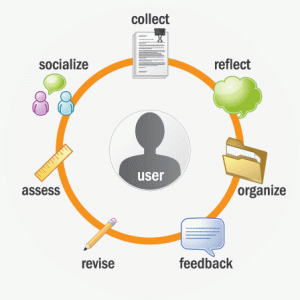
Source: Retrieved from this (link).
2. How do they differ from traditional portfolios?
Traditional portfolios are different from e-portfolio’s. According to ETFI Database (2015), electronic Portfolios are a creative means of organizing and sharing artefacts, information, and ideas about teaching and/or learning, along with personal and professional growth. However, traditional portfolio’s “rely on identifying the investor’s target profile” which use traditional models such as “conservative portfolio, income portfolio, balanced portfolio, growth portfolio and aggressive growth portfolio.”
Source: ETFI Database (2015) Retrieved from (link)
3. What are the common types of e-Portfolios?
There are different types of e-portfolio that other people are talking about but, according to Sharma, Mishra, InfoSci-Books, and ebrary, (2007), assert that there are three types of e-portfolios which are 1. “The showcase e-portfolio, 2. “The structured e-portfolio and 3. “The learning e-portfolio.
Firstly, the “showcase e-portfolio” demonstrates exemplary work and student skills. This type of portfolio is created at the end of a program to highlight the quality of student’s work. Students typically show this portfolio to potential employers to gain employment at the end of a degree program, (Sharma, Mishra, InfoSci-Books & ebrary, 2007).
Secondly, the “structured e-portfolio” allows students to demonstrate attainment of skills in relation to established educational standards, provides an online journal for reflection, and includes a powerful system that promotes ongoing teamwork with peers and the advisors (Sharma, Mishra, InfoSci-Books & ebrary, 2007).
Finally, (Sharma, Mishra, InfoSci-Books & ebrary, 2007), declare the last types of e-portfolio is the ‘learning portfolio’. This type of portfolio is a cooperative work and shows what the group have done so far. This type of e-portfolio encourages ongoing reflection that can help faculty, departments and students better understand their learning process. (Sharma, Mishra, InfoSci-Books & ebrary, 2007)
Source: (Sharma, Mishra, InfoSci-Books & ebrary, 2007)
4. What purposes and uses of e-portfolios?
There are multiple purposes for e-portfolio however Hampe and Lewis (2013) assert that there are three purposes of e-portfolio.
Firstly, “E-portfolios may act as assessment tools for documenting progress and the attainment of standards or competencies.” (Reflective practice to improve schools: An action guide for educators, 2006). Assessment portfolio structures have become very popular in higher education today, and have produced a great number of commercial tools to support institution-wide portfolio growth. Assessment and accountability are the primary reasons for many instructive institutions to advance in portfolio tools. The main difference between portfolios made for formative assessment, and those created for summative assessment, the former are intended to provide feedback to advance learning while the latter are used to gather data for more high stakes assessment (Hampe & Lewis, 2013; Zubizarreta, 2009)
Secondly, according to Hampe and Lewis (2013), e-portfolio’s “may act as tools of reflection and digital stories that encourage critical thinking and deeper learning.” The learning portfolio is, intended to support learning, or planning, or just document the learning procedure. The basic idea is the phrase carved onto Greek temples, “know thyself” (link) which has led many people to a lifetime of investigation, with Self-knowledge as a major outcome of learning.
Finally, the last purpose of e-portfolio according to Hampe and Lewis (2013), “may act as accessible résumés to showcase abilities and achievements.” Showcase portfolios are produced by a student to showcase their greatest potentials to an audience, whether advertising services as a professional or applying for a job. This type of portfolio lets a learner tell their own story, and is one of the primary motivators for many portfolio developers.
Source: Retrieved from (link)
5. Why should I use an e-Portfolio or What software, platforms or management systems are commonly used?
Using e-portfolio is very important and can help a lot in different areas. There are a number of reasons for using an e-portfolio, as outlined in the previous section. Anyone can use e-portfolio for many purposes, at different areas and beyond.
There are a numbers of digital platforms used to host e-portfolio’s such as Mahara, Foliospaces and WordPress.
Mahara is an open source e-portfolio and social networking web application that provides users with tools to create and maintain a digital portfolio which means ‘think’ or ‘thought’ in Te Reo Maori. Mahara was established in mid 2006 provides the tool by “New Zealand’s Tertiary Education Commission’s e-learning Collaborative Development Fund (eCDF)” to set up a personal learning and development environment. It has been saying that “it’s over 1.200 New Zealand schools, and has over 46,000 active users (January 2013) used Mahara for MyPortfolio.
Mahara offers a wide range of features for professional and educational purposes and it is available for myself to use it similarly to ‘Wordpress web page’ it is another platform typical example for a beginners for a portfolio. Mahara also provide a wide ranging view of learning and development over different subject areas and throughout studies. Additionally, Mahara “is a fully featured web application to build your electronic portfolio. You can create journals, upload files, embed social media resources from the web and collaborate with other users in groups.”
Foliospaces is another platform similar to Mahara that use for creating a personal learning space. According to the Folio spaces this is where the “students, teachers, career professionals and others find electronic portfolios are the best way to:”
- “showcase achievement”
- “provide proof of learning and experience”
- “Give an receive feedback (in private or public”
- “reflect on learning and critical incidents”
- “help get jobs, project funding, promotion, and much more…”
This platform ‘FolioSpaces’ is the world-leading a free and completely featured electronic portfolio, weblog, resume builder and social networking system, connecting users and creating online communities.
Moreover, ‘Wordpress’ as mentioned above it is a typical example of a platform for beginners or less formal collections of work. People who are using this platform have been excited to customize the software to suit their own needs. Additionally, this platform can be customized in to a full-fledged “Content Management System (CMS)”, and many people are already doing just that.
Source: (Mahara, 2006; Folio Spaces, 2008 & WordPress, 2003)
6. What are some freedom, control, learning, and privacy issues connected to e-portfolio use?
Barrett (2006) and Lorenzo and Ittelson (2005), recommend that the use of technology through e-portfolios inspires the new ancestors or the next generations in the future of students. Through the independence and chances provided on the internet, pupils can look into more non-traditional possibilities for learning.
There was three main problems and implications from using e-portfolios in education.
To start with declaring whether it is “official” or not. With assessments, one finishes it and hands it in. Though, with e-portfolios it can be changed frequently.
Who owns the e-portfolio? The student or the institution?
Actually it is mostly affected when students are using home-grown servers to create their e-portfolio.
How do we judge the authenticity of the students work?
It can be sliced and transformed at any time and if you have the login, by any person Kumar (2009), suggests one problem would be for those who have no technology experience and / or find it very difficult to learn in that way.
Consequently, we students will be seeking sources that can improve our learning both within the course as well as through extracurricular activities, in order to attain the posts on the e-portfolios. Thus, e-portfolios can advance the learning ability of us pupils as we develop more ways of learning when we take our learning into our own hands. Although, we will develope more responsibility for our own learnings in order to make a well-organized e-portfolio. This process requires the student to have a clear goal, so we will set each specific targets relating to this goal. Similarly, in the process of reflecting, honesty needs to be applied (Barrett, 2006; Lorenzo & Ittelson, 2005; Kumar, 2009).
REFLECTIVE PRACTISE
1. What are reflective practice and reflective writing?
According to Smyth (1992), the term ‘reflective practice’ carries different meanings in different disciplines. In the context of this paper, reflective practise is the process through which we measure our learning and success.
Nevertheless, reflective writing provides a chance for an individual or a group to advance understanding of their work and working process through further reflection and perspectives from people. (Copley, 2011; Domingues & McDonald, 2009; Moon, 2004)
Source: Retrieved from https://en.wikipedia.org/wiki/Reflective_practice
2. How does reflective practice enhance learning?
Ellis (2002) and Osterman and Kottkamp (2004), state that reflective practice does help to enhance learning. The reflective practice adopts several strategies to engage the learner such as:
- “possibilities”
- “realities”
- “issues”
- “standards”
- “Multidimensional perspectives.”
While considering the set of examples above, the learner can achieve and enhance their learning through reflective practice. Theorists suggest it is a “scaffolding tool for the learner on embedding effective use of technology to enhance their learning” (York-Barr, Sommers, Ghere & Monite, 2005).
See here
Reflective practise is mostly concerned with self-development and it allows personal growth. Buarabhan (2015) shows the Kolb learning style model of reflective practise (see diagram above). “We become better at using all the stages of the learning cycle, particularly with reflecting on experience, we will become better lifelong pupils” (Ellis, 2002; Osterman, & Kottkamp, 2004; Buarabhan, 2015; York-Barr, Sommers, Ghere & Monite, 2005).
3. What types of reflective practice are most appropriate for the purposes of this paper?
There are some people said that the types of reflective practice is more than 2 but according to Copley (2011), said that there are two types of reflective practice which are “Reflecting ‘on’” and “Reflecting ‘in’.”
Firstly, reflecting ‘on’ action is involving us in intentionally discovering understanding and experience about practice after that particular learning practise had been completed. It happens through analysis, interpretation and combining of information about the experience so that new perspectives are found about what has happened.
Secondly, the reflecting ‘in’ according to Copley (2011), this is the way people think about practice when they are actually still engaged in it. This is often realized as an automatic activity that occurs subconsciously for the people who reflect every day. It is observed by some people to be intuitive and an unconscious process, and therefore not really a reflective activity that we use intentionally.
Moreover, the appropriate type of reflective practice that fits this paper is the Reflecting ‘on’. The reason why I have identified this type of reflective practice is because this is how I understand my own working process. (Copley, 2011; Stefani, Mason, & Pegler, 2007).
4. What are the stages of these types of reflective practice?
According to Caramel (2006), assert that this cyclical model of reviewing practice and critical incidents. This model pays attention to feelings, as powerful components of the experience.
Description – What happened?
Conclusion – What else I could have done?
Action Plan – if it arose again, what would I do?
Feelings – What was my thinking and feeling?
Evaluation – What was good and bad about the experience?
Analysis – What sense can I make of the situation?
The process described above in the cycle can be applied to the stages of reflective practice in assessing how a particular project has been completed and to what level of quality. However Caramel (2006), described that this cycle helps reflective practitioners gain the most from the process.
5. What are the characteristics of reflective writing?
Reflective writing for an academic assignment, regardless of the purpose and stage of the paper, can be identified by these characteristics:
According to Moon (2004) and Williams, Hricko and Howell (2006) described some of the characteristics of reflective writing, first it need to be more purposeful. Reflective writing does not mean writing down remainders of thoughts as they pop into my mind. That might work for a diary or memo, but not for reflective writing with an academic purpose. Begin with a hypothesis or aim and what state some objectives for what I have to accomplish, to learn, to improve, to demonstrate and to understand better.
Secondly, reflective writing is an individual response. It allows the reflective writer to discover a connection between themselves as the writer, the work itself, the process of working and the way it will be received by readers. Additionally, it is about actual situations, uses the first person singular and seeks to understand an action or event which has been personally experienced. (Moon, 2004; Williams, Hricko & Howell, 2006; Pearson, 2012 and Reflective practice, 2000).
Moreover, another characteristic of reflective writing it is perceptive and skilful. It is not merely describing or telling a story. It requires higher order thinking skills for analysis, synthesis and evaluation. Although it may use research sources, but reflective writing must meet the standards of precision, clarity, conciseness, and correctness of any other styles of formal writing (Moon, 2004; Williams, Hricko & Howell, 2006; Pearson, 2012 and Reflective practice, 2000).
E-Portfolio’s, Reflective Practise, and Me
As a current student at university if I use e-portfolio I will share the information on my academic progress with my personal lecturer or tutor. Another important of using e-portfolio to develop and store coursework, such as reflections which may be required as part of my course assignment.
Furthermore e-portfolio will help me self-assess and monitor aspects of my learning and give me an overview of my learning by bringing together my experiences from individual courses. E-portfolio also useful for collating evidence in one central online area of the skills that I have developed whilst studying at Auckland University of Technology such as iReflect skills and other course papers. (Boggan & Harper, 2011; Sharma, Mishra, InfoSci-Books & ebrary, 2007)
Last but not the least, reflective writing I may not hand in the first draft but I need to write and revise it for so many times. It also need to follow APA style in all aspects possible, use formal punctuation, use complete sentences and read the paper back to myself, aloud (Moon, 2004; Williams, Hricko & Howell, 2006; Pearson, 2012 and Reflective practice, 2000).
References
Bibbo, T., & d’Erizans, R. (2014). E-portfolio: Time to reflect. The International Schools Journal, 34(1), 61. (link)
Boggan, M. K., & Harper, S. (2011). Creation of electronic portfolios in an educational leadership cohort.Journal of Case Studies in Education, 1, 1. (link)
Buaraphan, K,. (2015). Grades 1-12 thai students’ learning styles according to kolb’s model. Asian Social Science, 11(10), 186. (link)
Carmel Ashby. (2006). Models for reflective practice. Practice Nurse, 32(10), 28. (link)
Copley, S. (2011). Reflective practice for policing students. Exeter: Learning Matters. (link)
Dominguez, L., & McDonald, J. (2009). REFLECTIVE writing. The Science Teacher, 76(3), 46. (link)
Ellis, L. L. (2002). Reflective practice to improve schools: An action guide for educators. Bulletin, 86(630), 99-101. doi:10.1177/019263650208663012 (link)
ETF insight. (2015). ETFI DATABASE. Retrieved August, 11, 2015, from http://www.etfinsight.ca/?page_id=15052
Folio Spaces. (2008). Free ePortfolios. Retrieved from https://www.foliospaces.org/
Hampe, N., & Lewis, S. (2013). E-portfolios support continuing professional development for librarians. Australian Library Journal, 62(1), 3. doi:10.1080/00049670.2013.771766 (link)
Kumar, R. (2009). “E-portfolios”. Retrieved on August 11 from https://en.wikibooks.org/wiki/Issues_in_Digital_Technology_in_Education/E-Portfolios
Lorenzo, G. & Ittelson, J. (2005) “An overview of e-portfolios”. Retrieved on August 11 from http://net.educause.edu/ir/library/pdf/ELI3001.pdf
Mahara. (2006). Open source eportfolios. Retrieved from https://mahara.org/
Moon, J. A. (2004). A handbook of reflective and experiential learning: Theory and practice. New York: RoutledgeFalmer. (book)
Osterman, K. F., & Kottkamp, R. B. (2004). Reflective practice for educators: Professional development to improve student learning. Thousand Oaks, Calif: Corwin Press. (book)
Pearson, J. (2012). HCAs: Developing skills in reflective writing. British Journal of Healthcare Assistants, 6(3), 140-142. doi:10.12968/bjha.2012.6.3.140 (link)
Reflective practice. (2000). Reflective Practice, (link)
Reflective practice to improve schools: An action guide for educators (2006). Library Journals, LLC. (link)
Sharma, R. C., Mishra, S., InfoSci-Books, & ebrary, I. (2007).Cases on global e-learning practices: Successes and pitfalls. Hershey, PA: Information Science Pub. (link)
Smyth, J. (1989). A critical pedagogy of classroom practice.Journal of Curriculum Studies, 21(6), 483-502. doi:10.1080/0022027890210601 (link)
Stefani, L., Mason, R., & Pegler, C. (2007). The educational potential of e-portfolios: Supporting personal development and reflective learning. New York: Routledge. (book)
Williams, D. D., Hricko, M., & Howell, S. L. (2006). Online assessment, measurement, and evaluation: Emerging practices. Hershey, PA: Information Science Pub. (link)
WordPress. (2003). Code is Poetry. Retrieved from https://wordpress.org/
York-Barr, J., Sommers, W. A., Ghere, G. S., & Montie, J. K. (2005). Reflective Practice to Improve Schools: An Action Guide for Educators. Corwin, Newbury Park, CA, United States. (book)
Zubizarreta, J. (2009). The learning portfolio: Reflective practice for improving student learning. San Francisco, Calif: Jossey-Bass. (book)
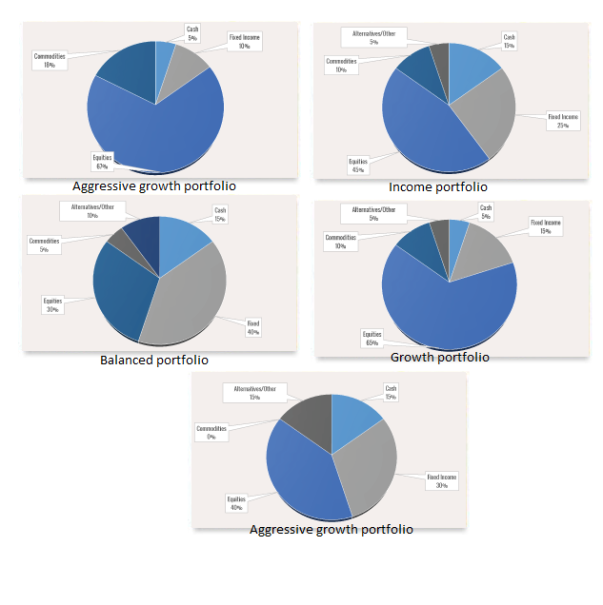
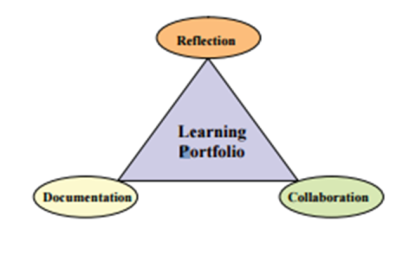

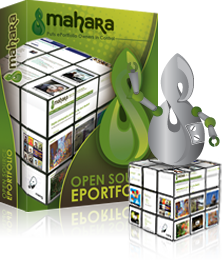


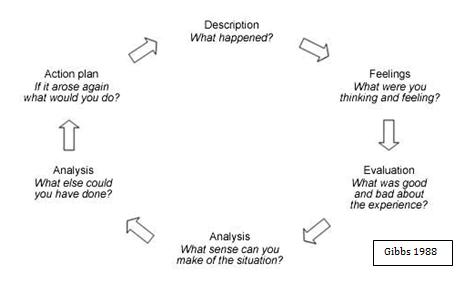
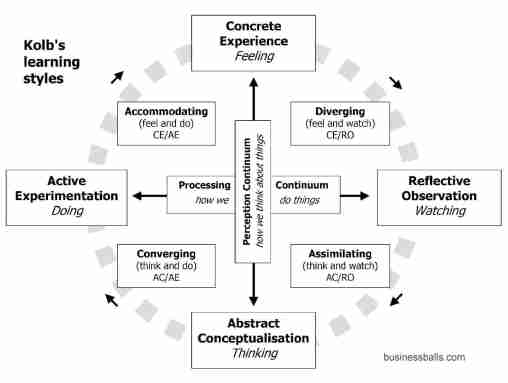
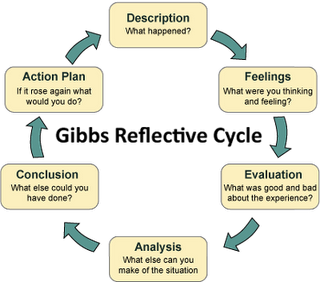
Aug 03, 2015 @ 06:12:28
You have made an excellent start on this. Your information sources reliable and your answers to the questions are good.
LikeLiked by 1 person
Aug 05, 2015 @ 23:18:24
I’m still researching about the e-portfolio to get some relevant information about it that can help me with my brief 1 and 2. Thanks!
LikeLike
Aug 11, 2015 @ 04:06:52
Pretty thorough research!
LikeLiked by 1 person
Aug 11, 2015 @ 04:28:32
Wow. You sir have really gone quite in depth with the research. This quite an interesting read.
LikeLiked by 1 person
Aug 11, 2015 @ 04:50:06
Thanks Nick! Actually it was a lot of work doing the research and the reading and how I wish I have the majority of good in English to fulfill my work in a proper way and check the grammatical error! Thanks for the comment! Appreciated! 🙂
LikeLike
Aug 13, 2015 @ 03:46:15
My man, really nice blog you have created here. I really like the cover art, wouldn’t mind stealing that for my blog 🙂
I have one critique to make, hopefully it will help, if not just ignore my mindless mutterings. I read the section titled, ‘What are the common types of e-Portfolios?’. I think you could add a sentence, stating that there are many different types of e-portfolios, and that the range of portfolios is not limited to the ones you have discussed. An idea, but see what ya think.
LikeLiked by 1 person
Aug 13, 2015 @ 03:54:11
You’re the man bro! Appreciated your help! 🙂 Will do that idea! Cheers!
LikeLike
Aug 13, 2015 @ 04:51:04
This is a very thorough post about E-portfolio’s and Reflective Practise. I have no suggestions.
LikeLiked by 2 people
Aug 13, 2015 @ 05:25:20
Thank you Mr.Nelson! How I wish that English is my first language so I can do what you’re all done so far for your work and proof read it regularly but I know for sure all of your feedback is much appreciated! Again thanks for spending your times comment on my blog! 🙂
LikeLiked by 1 person
Aug 16, 2015 @ 11:30:49
Really like your portfolio Naua. Very thorough research .
LikeLiked by 1 person
Aug 16, 2015 @ 11:37:13
Hi Agnes, Thanks for commenting on my blog and do hope that this information will help us all on your proposal! Cheers! 🙂
LikeLiked by 1 person
Aug 18, 2015 @ 01:56:45
Hi Naua sorry for the late response I am back on to the line now I was far behind, anyway I like your portfolio it looks interesting and you have done a lot of work here, good and rich resources here that we can use in the future
Cheers !
LikeLiked by 1 person
Aug 18, 2015 @ 02:19:12
Malo kuo tau mai e vaka! lolz! Well come back toko and thanks for find it interesting because I thought it will bored everyone, but thanks for commenting on my blog. Cheers!
LikeLike